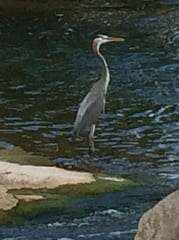The North American Breeding Bird Survey (BBS) has had a large role in my research program for over 17 years. I first became aware of the BBS while reading Jim Brown’s “Macroecology” shortly after the book came out in 1995. I was still in graduate school at the time but the book had a big impact on me. Brown used BBS data extensively in the book and a few prior publications, particularly with regard to developing and explaining macroecological patterns relating species abundance, range size, population trends, and body size.
In 2002, I obtained a temporary research associate position at Colorado State University funded through the USDA’s Natural Resources Conservation Service. That position called for me to use BBS data (along with an NRCS land cover database) to do studies of bird diversity, abundance, and population trend … that’s it. The research was truly that open-ended. So, in Fall 2002 I begin to analyze BBS data and have been doing so ever since. I have used the data in studies of species diversity, habitat associations, population trends, and range expansion. Also, I have had graduate students that have used BBS data for their research projects. See my list of publications for the various papers using BBS data. More recently, I received direct funding from the Patuxent National Wildlife Research Center (USGS) to continue my assessments of land cover composition and arrangement along BBS routes. In particular, that research (ongoing now since about 2009) got me started in using GIS in my research program.
The BBS and other bird databases (Christmas Bird Count, eBird) are exemplary examples of citizen science. Moreover, they have and continue to be incredibly useful to ecologists doing basic research as well as conservationists involved in applied research and actual conservation planning.

